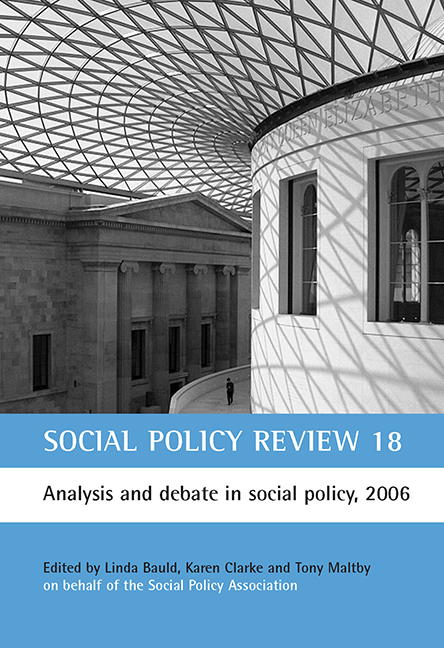eleven - Extending working life: problems and prospects for social and public policy
Published online by Cambridge University Press: 15 January 2022
Summary
Introduction
Since 1997, issues relating to older workers and retirement have become major influences on the development of economic and social policy. In part this has reflected changes to the organisation of work and retirement during the 20th century. Donald Hirsch (2003) has observed that, throughout this time, the idea of a fixed point of leaving work – at age 60 or 65 – developed as one of the great certainties of life, particularly in the case of men. Modern retirement policy was itself a product of the late 19th century, as large private companies and branches of the civil service adopted pension policies of various kinds. Following this, pension provision was extended to a wider range of groups, with recognition by government – especially in periods of economic depression – of the need to assist the retirement of older workers (Hannah, 1986; Phillipson, 1993). In consequence, modern states became responsible not only for the income maintenance of substantial sections of the older population but also for determining the rules governing access to different pathways into retirement (Kohli et al, 1991; Blanchet et al, 2005).
These ‘pathways’ or ‘transitions’ have become more diverse than once was the case, with trends towards earlier retirement ages, the development of ‘bridging employment’ between work and retirement, and greater diversity in the structure of pension provision (with the basic state pension joined by an array of means-tested credits, second state pensions, personal pensions and occupational pensions).
Alongside these developments, however, governments across many Western countries have been highlighting the desirability of new approaches to the employment of older workers (Maltby et al, 2004; Reday-Mulvay, 2005). In the case of the UK, a variety of measures have been adopted to promote both re-entry into employment and to prevent premature exit, these including: Jobcentre back-to-work programmes, modifications to Incapacity Benefit eligibility criteria, reforms to pension access rules, and campaigns around age discrimination in the workplace (DWP, 2001, 2002a). These initiatives reflect a major change in the policy environment as regards older workers. While the 1970s and 1980s focused on the need to replace older with younger workers, the concern in the early 21st century is to encourage more people to work beyond state pension age.
- Type
- Chapter
- Information
- Social Policy Review 18Analysis and Debate in Social Policy, 2006, pp. 221 - 248Publisher: Bristol University PressPrint publication year: 2006



